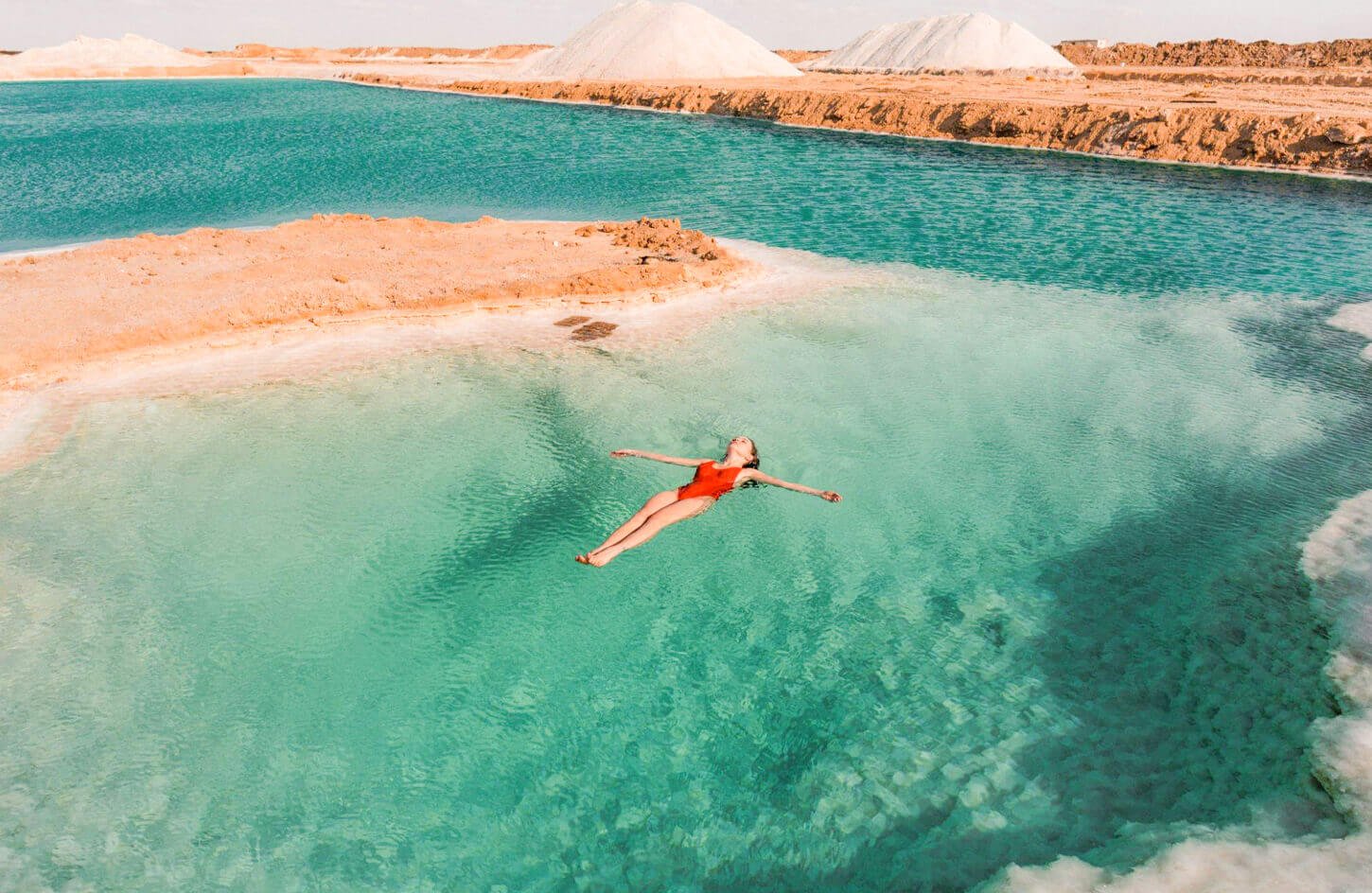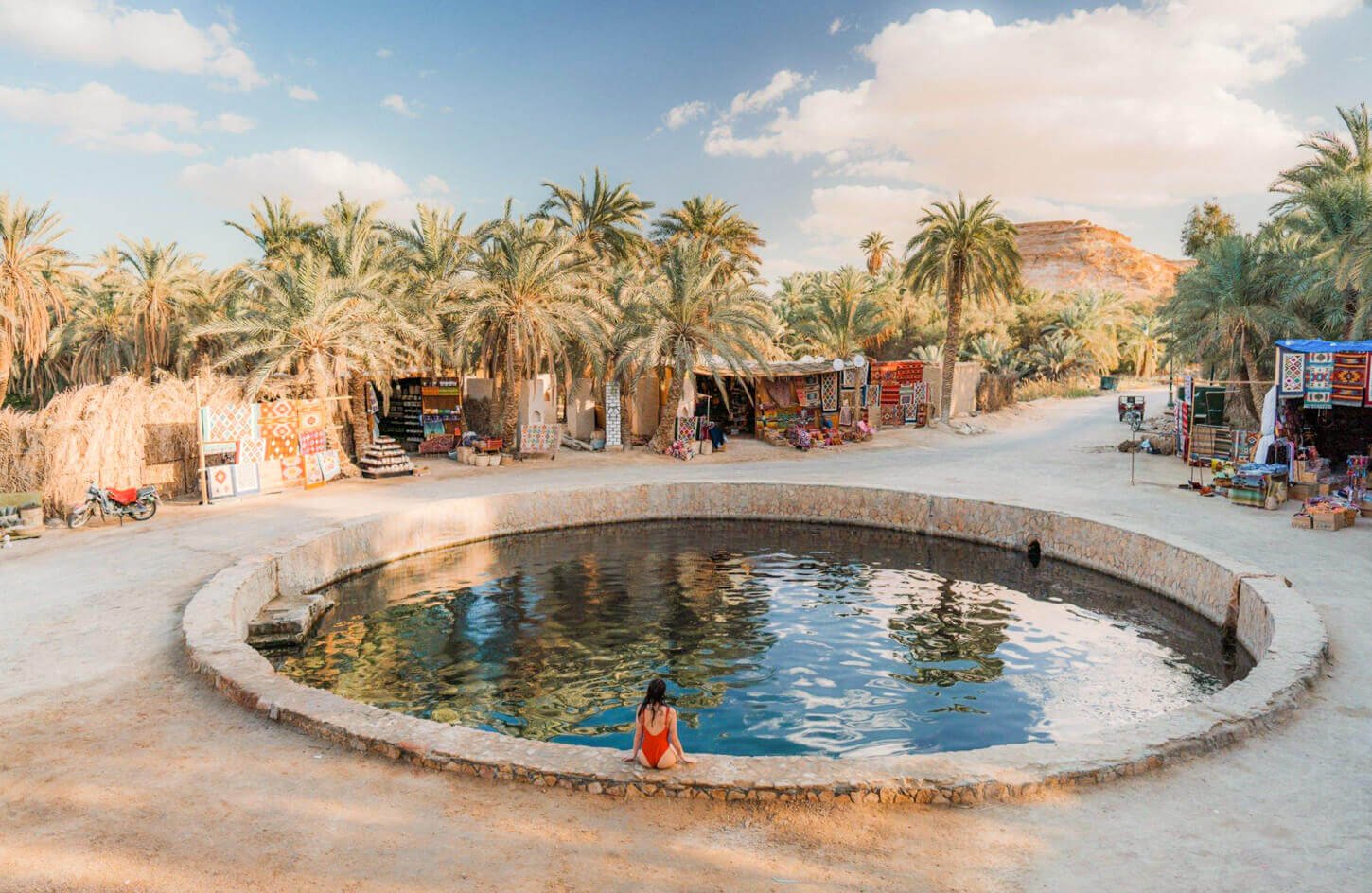Siwa Oasis is a hidden gem nestled amidst the vast desert landscapes of Egypt. This breathtaking oasis has captivated the hearts of travelers for centuries, offering a harmonious blend of historical significance, natural beauty, and rich cultural heritage. Located in the heart of the Western Desert, Siwa Oasis stands as an oasis of tranquility and a gateway to an ancient world. Let’s delve into the wonders of Siwa Oasis, exploring its historical background, geographical features, cultural heritage, tourism attractions, local economy, preservation efforts, and more.
Siwa Oasis Situated approximately 50 kilometers east of the Libyan border, Siwa Oasis is a picturesque haven that spans over 80 kilometers in length. Surrounded by towering sand dunes and barren landscapes, this isolated oasis has been a refuge and a center of civilization for thousands of years. Siwa Oasis is renowned for its unique customs, enchanting architecture, and natural wonders that attract curious explorers from around the globe.
Located in the western part of Egypt, Siwa Oasis lies approximately 560 kilometers west of Cairo. Its strategic position on an old trade route between Egypt and Libya has historically made it a vital crossroads for civilizations. Siwa Oasis is not only geographically significant but also holds immense cultural and historical importance, being home to ancient settlements and serving as a hub for various civilizations throughout history.
Historical Background
Ancient civilization and settlement in Siwa Oasis
Siwa Oasis boasts a rich and storied past dating back to prehistoric times. It was once home to the Berber-speaking Siwan people, who have inhabited the region for thousands of years. The oasis became a prosperous settlement and a trade center during the ancient Egyptian civilization.
Influence of various civilizations (Egyptians, Greeks, Romans)
Throughout its history, Siwa Oasis experienced the influence of various civilizations. The ancient Egyptians revered Siwa as a sacred site and believed it to be the birthplace of the god Amun. The Greeks, led by Alexander the Great, were enchanted by the oasis and its Oracle of Amun. Later, the Romans exerted their authority and contributed to the region’s development.
Historical events and notable figures
Siwa Oasis has witnessed several significant events and hosted prominent figures. One of the most notable events was the famous meeting between Alexander the Great and the Oracle, where he was declared the divine ruler of Egypt. The oasis has also been associated with Cleopatra, the last queen of Egypt, who sought refuge and found solace in Siwa during her challenging times.

Geographical Features
Location and surrounding landscape
Siwa Oasis is located in the western desert of Egypt, surrounded by breathtaking landscapes. To the west lies the vast expanse of the Great Sand Sea, an endless sea of golden dunes that creates a mesmerizing sight. The oasis is nestled amidst a cluster of palm groves, creating a contrasting oasis against the desert backdrop.
Oasis ecosystem and natural resources
The oasis has a unique ecosystem sustained by natural springs flowing from deep within the Earth. These freshwater springs provide sustenance to the abundant date palms and support a variety of flora and fauna, creating a vibrant oasis ecosystem. The region is also known for its fertile soil, which allows for agriculture and date farming.
Main features: salt lakes, springs, and palm groves
Siwa Oasis is dotted with several enchanting features. One of the prominent attractions is the picturesque salt lakes, such as Bir Wahed, where visitors can enjoy a soothing swim while surrounded by stunning salt formations. The oasis is also famous for its refreshing freshwater springs, including Cleopatra’s Spring. Moreover, the lush palm groves lend the entire oasis a serene and picturesque charm.
Cultural Heritage
Unique customs and traditions of the Siwan people
The Siwan people have preserved their distinct customs and traditions passed down through generations. Their unique way of life revolves around agriculture, handicrafts, and hospitality. Visitors can immerse themselves in the local culture by participating in traditional festivals, witnessing Siwan weddings, or trying local delicacies.
Cultural influences from neighboring regions
Siwa Oasis has historically been a meeting point for diverse cultures, resulting in a rich cultural tapestry. The Siwan culture bears influences from neighboring Berber tribes and Egyptian, Greek, and Roman civilizations. This amalgamation of influences is evident in the local architecture, language, clothing, and cuisine.
Architecture and historical landmarks
Siwa Oasis boasts a wealth of architectural treasures and historical landmarks that showcase its rich heritage. The most iconic landmark is the Shali Fortress, an ancient citadel built from salt and mud bricks, which offers a glimpse into the oasis’s past. Other notable structures include the Temple of the Oracle, an ancient temple dedicated to the god Amun, and Aghurmi, a traditional Siwan village renowned for its distinctive architecture.
Tourism and Attractions
Tourist activities and experiences in Siwa Oasis
Visitors to Siwa Oasis can embark on a range of unique experiences. Exploring the lush palm groves on a traditional donkey cart, savoring delicious Siwan cuisine, and witnessing traditional dances and music performances are just a few examples of the immersive cultural encounters available. Adventurous travelers can also indulge in thrilling activities such as desert safaris, sandboarding, and stargazing in the clear desert skies.
Famous attractions: Shali Fortress, Temple of the Oracle, Cleopatra’s Pool
Siwa Oasis boasts several renowned attractions that capture the essence of its history and beauty. The Shali Fortress stands as a testament to the architectural prowess of the past. The Temple of the Oracle, a sacred site from ancient times, offers a glimpse into Siwa’s spiritual significance. Cleopatra’s Pool, a tranquil spring where Cleopatra is believed to have bathed, continues to captivate visitors with its natural beauty.
Natural wonders: Great Sand Sea, Fatnas Island, Bir Wahed hot spring
Nature enthusiasts will find Siwa Oasis a paradise filled with natural wonders. The Great Sand Sea presents a surreal landscape of endless sand dunes, perfect for exhilarating desert adventures. Fatnas Island, located in the middle of a salt lake, provides a unique setting for relaxation and exploration. The Bir Wahed hot spring, with its therapeutic waters and captivating salt formations, is a must-visit destination for rejuvenation.
Local Economy
Traditional occupations and industries
The local economy of Siwa Oasis revolves around traditional occupations and industries. Date farming remains a significant source of income, with Siwan dates being highly prized for their exceptional quality. Handicrafts such as pottery, weaving, and embroidery contribute to the local economy.
Agriculture and date farming
Siwa Oasis is renowned for its fertile soil, which sustains thriving agricultural practices. The oasis’s date palms, with their sweet and succulent fruits, are the pride of Siwa. Date farming plays a crucial role in the local economy, and visitors can witness the various stages of date cultivation, from planting to harvesting.
The growing tourism industry has positively impacted the local economy of Siwa Oasis. The influx of visitors has created employment opportunities, particularly in hospitality, tour guiding, and souvenir industries. The revenue generated from tourism contributes to the development of infrastructure, preservation of cultural heritage, and improved livelihoods for the local community.

Challenges and Preservation Efforts
Environmental concerns and sustainability
As Siwa Oasis continues to attract more visitors, it is essential to balance tourism with environmental sustainability. Efforts are being made to minimize the impact on the delicate oasis ecosystem, including responsible waste management, sustainable tourism practices, and conservation of natural resources.
Balancing modern development with heritage preservation
Preserving Siwa Oasis’s unique heritage while accommodating modern development is a delicate balancing act. Authorities and stakeholders strive to strike a harmonious balance by implementing regulations that protect historical landmarks, promote sustainable architecture, and support traditional industries.
Conservation initiatives and protection of cultural sites
Several initiatives are underway to conserve Siwa Oasis’s cultural and natural heritage. Preservation organizations collaborate with local communities to safeguard historical sites, promote traditional craftsmanship, and raise awareness about the importance of cultural preservation. Additionally, sustainable tourism practices emphasize respecting and preserving the oasis’s fragile ecosystem.
Siwa Oasis stands as a testament to the enduring allure of ancient civilizations, offering visitors a rare opportunity to immerse themselves in its historical and natural wonders. From its archaeological treasures to its breathtaking landscapes, Siwa Oasis holds a unique place in the hearts of travelers seeking an authentic and enriching experience.
With its untapped potential and growing recognition, Siwa Oasis has a good tourism and sustainable development future. As more travelers discover the oasis’s beauty and cultural richness, Siwa has the opportunity to become a globally recognized destination.
Preserving Siwa Oasis’s heritage is paramount to ensure its authenticity and cultural legacy. By embracing sustainable practices, supporting local communities, and raising awareness about the oasis’s significance, we can contribute to its long-term preservation and safeguard its unique heritage for future generations.
In conclusion, Siwa Oasis beckons adventurers, history enthusiasts, and nature lovers alike to embark on a journey through time and immerse themselves in the enchanting beauty of this ancient oasis. With its historical significance, breathtaking landscapes, and vibrant cultural heritage, Siwa Oasis offers an experience like no other—an oasis of wonder waiting to be explored.


0 Comment